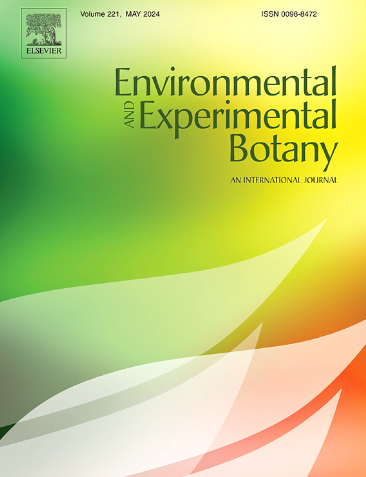Mechanisms activating trace heavy metals in the rhizosphere microenvironment of Amaranthus hypochondriacus L.
IF 4.5
2区 生物学
Q2 ENVIRONMENTAL SCIENCES
引用次数: 0
Abstract
Soil heavy metal activation is closely related to rhizosphere soil pH, O2 and enzyme activity levels. In this study, we used laser ablation inductively coupled plasma![]() mass spectrometry (ICP
mass spectrometry (ICP![]() MS), planar optode (PO), soil in situ enzyme spectrum analysis, and the diffusive gradients in thin films (DGT) method to investigate heavy metal accumulation in Amaranthus hypochondriacus L. growing in polluted soil (Cd, Pb and Zn) and unpolluted soil, as well as dissolved oxygen (DO), pH, soil enzyme activity, and trace heavy metal dynamics in rhizosphere and nonrhizosphere soils. The results revealed that the growth of A. hypochondriacus was significantly inhibited under combined Cd, Pb, and Zn stress, with the most pronounced effects on root and branch biomass. Radial oxygen loss (ROL) and alkalization occurred in the roots of A. hypochondriacus, which were influenced primarily by root growth and environmental conditions. The enzyme activity patterns indicated that acid phosphatase (ACP), alkaline phosphatase (ALP), and β-glucosidase (BG) activities were primarily associated with the root system and that the activities of these enzymes were relatively low in nonrooted soil. Under heavy metal stress, the ACP, ALP and BG activities in the hotspots of soil increased. DO, pH, and soil enzyme activity were significantly correlated with the presence of heavy metals Cd, Pb, and Zn, influencing the mobilization mechanisms of trace metals in the rhizosphere. These findings lay the groundwork for understanding the impact of root-induced alterations in O2, pH, and soil enzyme activity on the mobility of trace heavy metals in soil.
MS), planar optode (PO), soil in situ enzyme spectrum analysis, and the diffusive gradients in thin films (DGT) method to investigate heavy metal accumulation in Amaranthus hypochondriacus L. growing in polluted soil (Cd, Pb and Zn) and unpolluted soil, as well as dissolved oxygen (DO), pH, soil enzyme activity, and trace heavy metal dynamics in rhizosphere and nonrhizosphere soils. The results revealed that the growth of A. hypochondriacus was significantly inhibited under combined Cd, Pb, and Zn stress, with the most pronounced effects on root and branch biomass. Radial oxygen loss (ROL) and alkalization occurred in the roots of A. hypochondriacus, which were influenced primarily by root growth and environmental conditions. The enzyme activity patterns indicated that acid phosphatase (ACP), alkaline phosphatase (ALP), and β-glucosidase (BG) activities were primarily associated with the root system and that the activities of these enzymes were relatively low in nonrooted soil. Under heavy metal stress, the ACP, ALP and BG activities in the hotspots of soil increased. DO, pH, and soil enzyme activity were significantly correlated with the presence of heavy metals Cd, Pb, and Zn, influencing the mobilization mechanisms of trace metals in the rhizosphere. These findings lay the groundwork for understanding the impact of root-induced alterations in O2, pH, and soil enzyme activity on the mobility of trace heavy metals in soil.
求助全文
约1分钟内获得全文
求助全文
来源期刊

Environmental and Experimental Botany
环境科学-环境科学
CiteScore
9.30
自引率
5.30%
发文量
342
审稿时长
26 days
期刊介绍:
Environmental and Experimental Botany (EEB) publishes research papers on the physical, chemical, biological, molecular mechanisms and processes involved in the responses of plants to their environment.
In addition to research papers, the journal includes review articles. Submission is in agreement with the Editors-in-Chief.
The Journal also publishes special issues which are built by invited guest editors and are related to the main themes of EEB.
The areas covered by the Journal include:
(1) Responses of plants to heavy metals and pollutants
(2) Plant/water interactions (salinity, drought, flooding)
(3) Responses of plants to radiations ranging from UV-B to infrared
(4) Plant/atmosphere relations (ozone, CO2 , temperature)
(5) Global change impacts on plant ecophysiology
(6) Biotic interactions involving environmental factors.
 求助内容:
求助内容: 应助结果提醒方式:
应助结果提醒方式:


